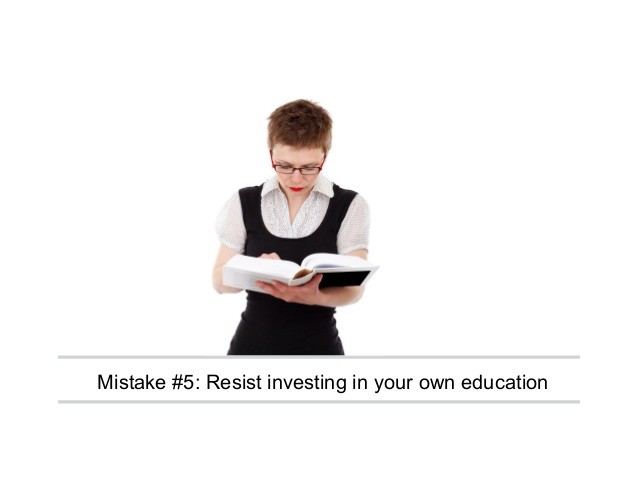Costly Investment Mistakes to avoid at all Cost Final Part
Post on: 1 Апрель, 2015 No Comment

.
In the process of investing, one often makes mistakes.
Here are some of the most common investing mistakes which investors generally make and some of which even I had made in the earlier part of my investment years
Of course, learning from the mistakes, continually, the investing experience has truly been rewarding experience.
You can also cultivate good habits of investing by avoiding the following mistakes.
This series is in continuation to the earlier 3 posts which contains the first 7 common mistakes committed by investors. You can read posts here. (Part I. Part II and Part III )
This post (Part IV) will throw light on the following common 3 mistakes generally committed by investors:
#8. No proper grip on Diversification If Too little is bad. Too much is no good either
Dont put your all your eggs in one basket.
There is wisdom is this old saying. Diversification is essentially spreading out investments across different types of asset classes. (Different kinds of asset classes like Equities, Debt, Gold, and Real Estate etc.)
Even within one asset class say, equities / mutual funds, portfolio has to be diversified eg: having stocks spread across sectors like Power, Banking, Oil, Telecom sectors, FMCG etc.
Example of over diversification. Having 20 different mutual funds, 50 different stocks and portfolio size is say 5lacs.
Example of under diversification. Having 2 stocks each of 2.5Lacs and both are from Oil sector.
Now, Great investors like Buffet and Munger of Berkshire Hathway, do engage serious money in specific stocks. However, you need to understand that they do intensive research, have access to top management of companies and are into serious investing business.
But for people. looking for investment avenues with the objective that over a period of time it beats inflation, generates sufficient retirement corpus, provides emotional security, beats the debt instruments by couple of percentage points annualized, which does not provide sleepless nights — for all such investors, having an optimal diversified portfolio is the way to go.
# 9. Not paying attention to Fees, Expenses, Commissions, Taxes involved
If you think education is expensive, try ignorance.
Do you know that the major earnings source of Mutual fund Providers (Players) are not via entry load (which is now banned by SEBI). or via exit load (Incidentally these costs are the most advertised). They make their money thru the juicy AMC charges. which each mutual fund charges you annually. So if you own around 10lacs of mutual fund. You are paying around 25,000/- Rs annually just for holding the units(Assuming highest expense ratios of 2.5% pa). The expenses get factored into the NAV (Net Asset Value) of the Mutual Fund Units. It is intangible and most investors do not feel the pain.

Do you know that over a period of 10 years, or 15 years what kind of negative impact this annual expense ratio business can have on your portfolio? This is over and above the widely known fact that around 80% of the mutual funds worldwide are known to underperform the Indices. And the fund manager is also subject to performance pressures from the fund house and so has to keep churning his portfolio in order to keep up with the pressure of performing leading to further expense costs. This is one of the reasons I personally do not like mutual funds which do a lot of churning. (You can get the information on portfolio turnover and various expenses of mutual funds from websites like www.valueresearchonline.com or www.mutualfundsindia.com .)
Do you know that ULIPs (an Investment+Insurance product) carry various expenses which ca be as high as 45 60% in the first year. There are umpteen number of charges like (premium allocation charges, mortality charges, admin charges, fund management charges etc, service tax) However the same is never explained by agents.
Do you know the various types of charges associated when you buy/sell shares? There are brokerage charges, service tax, education cess, securities transaction tax (STT), Stamp Duty, Exchange Levy etc.
It makes sense to be aware of these and various other charges involved so that you can make informed choices towards your way to successful investment.
#10. Stop trying to Copy others and Understand your self
Always be a first rate version of yourself instead of a second rate version of somebody else.
Please understand that there is no one-size-fits all solution in the field of investments. Needs and Wants, Risk taking capabilities, vision, emotional quotient, varies from person to person. Many investors make a mistake in simply copying a friends (or a relative’s) strategy. Please understand that the strategy might work for him or her. But you need to assess your own situation before jumping into investments and regretting later.
Example: You friend might be doing Futures and Options and Speculation and he might be perfectly all-right with it. He might be having a substantial portfolio base (maybe a good ancestral inheritance) and would be willing to take the additional risk in search for higher returns. However the same strategy of jumping into F&O might not be good for you, if you are basically looking for investments to fulfill your childs education needs.
Avoid the above common investment mistakes mentioned in this series and become a aware, intelligent and wise investor.














